 | ||
Similar My Inner Beast, The Hunger March, SevenMeters | ||
Pillar of shame in acteal english version
Pillar of Shame is a series of sculptures by Danish artist Jens Galschiot. Each sculpture is an 8-metre tall statue of bronze, copper or concrete. The sculpture was inaugurated at the NGO Forum of the FAO summit in Rome in 1996. Since then three other pillars have been erected, in Hong Kong, Mexico, and Brazil. A fourth one in Berlin was planned for completion in 2002, but the plan has not come to fruition due to various issues.
Contents
- Pillar of shame in acteal english version
- Hong kong pillar of shame erected by democracy activists
- Symbolism
- Pillar of Shame in Hong Kong
- Other Pillars of Shame
- References
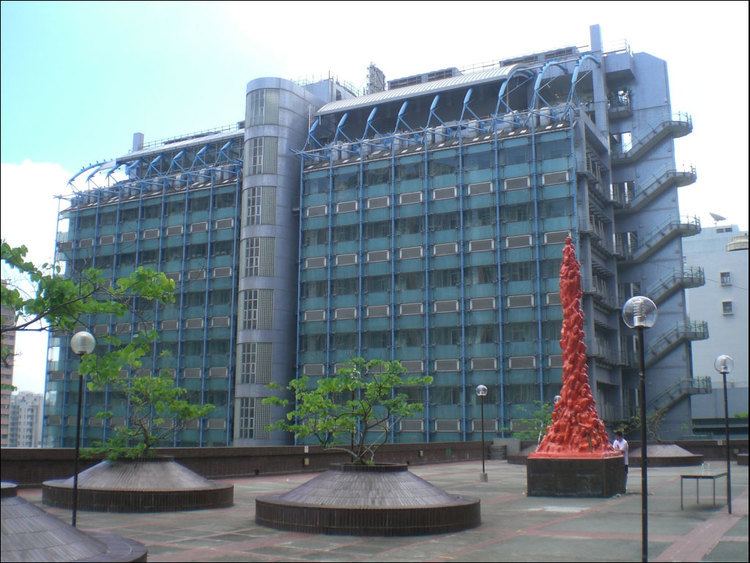
Hong kong pillar of shame erected by democracy activists
Symbolism
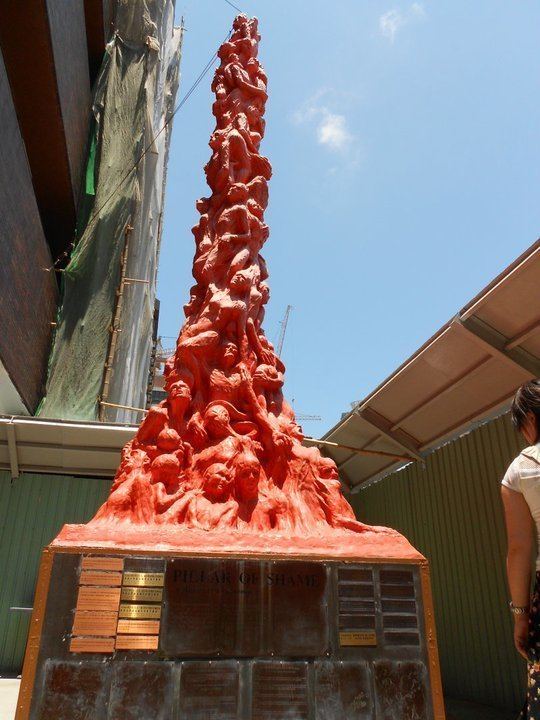
According to Galschiot, the sculptures remind people of a shameful event which must never recur. The torn and twisted bodies of the sculpture symbolize the degradation, devaluation and lack of respect for the individual. The black colour symbolizes grief and loss and the sculpture, which represents the victims, expresses the pain and the despair of the event. It can be used by both sides in complicated conflict situations, where it can be difficult to point out the guilty party.
Pillar of Shame in Hong Kong
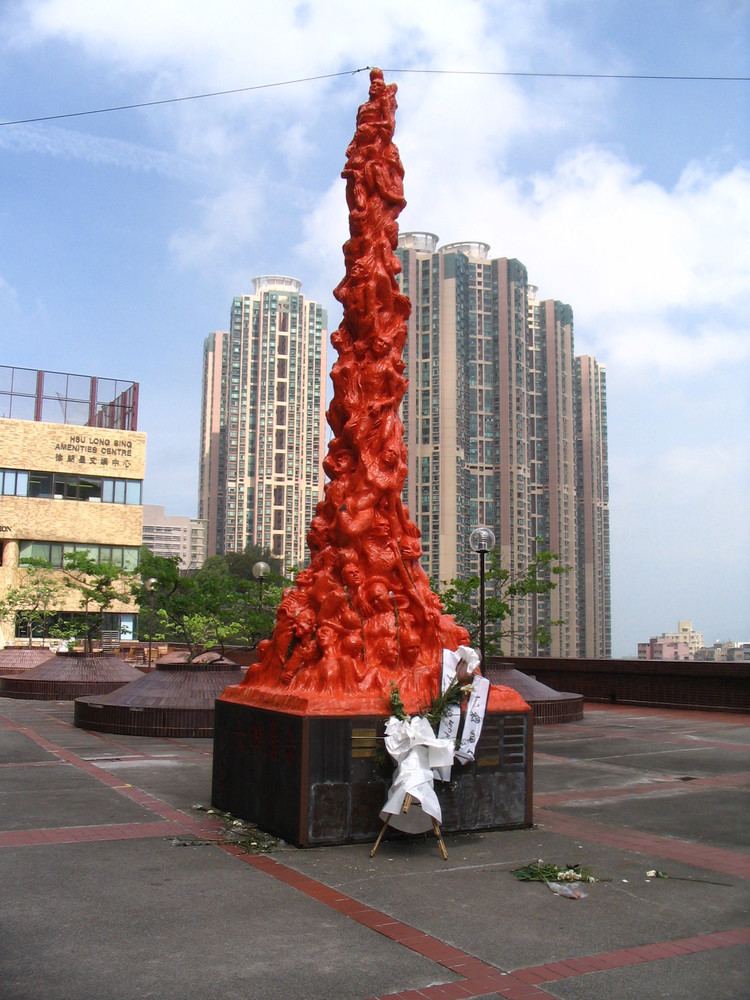
The Pillar of Shame (Chinese: 國殤之柱) in Hong Kong is a concrete sculpture, first erected in Victoria Park in 1997 to mark the eighth anniversary of the Tiananmen Square protests of 1989. The statue depicts 50 torn and twisted bodies to symbolize those who died in the government crackdown. On the base of the statue, the history and pictures of the massacre are carved in and engraved into the base, in both English and Chinese, are the words "The Tiananmen Massacre", "June 4th 1989" and "The old cannot kill the young forever."
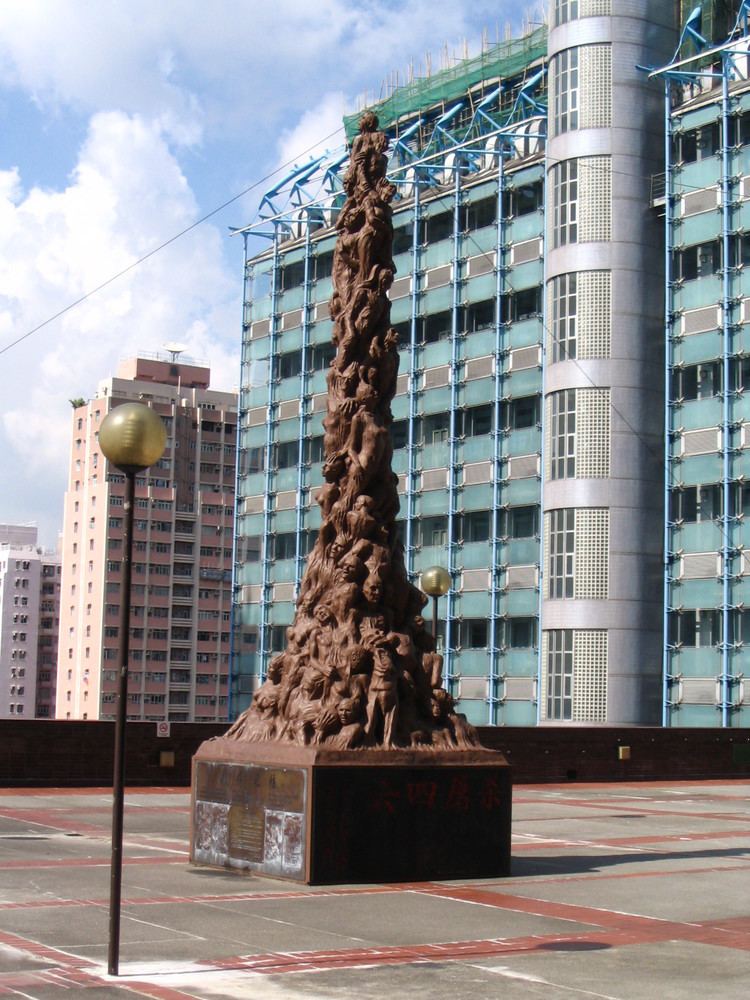
The Pillar was first exhibited at the Candlelight Vigil in commemoration of the eighth anniversary of the Tiananmen Square protests on 3 June 1997. Following the vigil on the night of 4 June 1997, local university students fought for a place to permanently home the statue. After scuffles with the police and controversy with the university leadership, at 3 a.m. students succeeded in moving the 2-tonne statue onto the podium of the Haking Wong Building at the University of Hong Kong, however the pieces were not assembled due to concerns that the floor was not strong enough. The Pillar was re-erected at the same place on 16 June 1997.
During the following months, the Pillar was exhibited at the following universities:

On 31 May 1998, the ninth anniversary of the Tiananmen Square protests, the sculpture was returned to Victoria Park where a candlelit vigil was held. On the morning before the vigil, a self-professed artist splashed two buckets of red paint onto the Pillar, claiming that "the blood of people is also my blood."
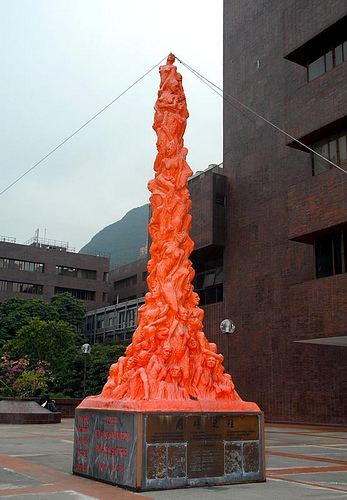
On 24 and 25 September 1998, The Hong Kong University Students' Union (HKUSU) held a general polling on a motion to home the Pillar of Shame at the University of Hong Kong on a long-term basis. The students' motion was carried, when 1,629 out of 2,190 voted to support, and the Pillar was moved onto the Haking Wong Podium again on 3 December 1998. It was again exhibited at the 10th anniversary candlelit vigil of the Massacre in 1999 at Victoria Park. Without the University authorities' endorsement, the Pillar was moved back to the Haking Wong podium after the anniversary, where has remained on display at; a silent tribute is held by HKUSU and The Hong Kong Alliance in Support of Patriotic Democratic Movements in China in May every year.
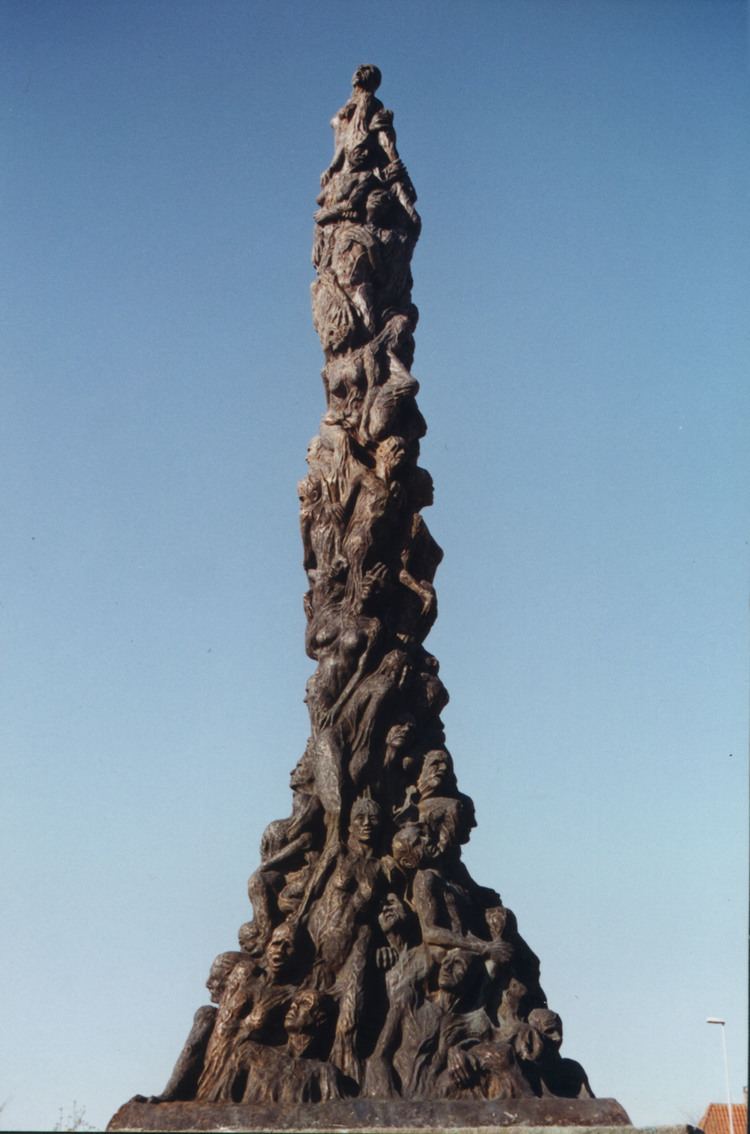
On 30 April 2008, the Pillar of Shame was painted orange as part of the project The Color Orange, to raise awareness about human rights in China. As the sculptor Galschiot was denied access to Hong Kong, the Hong Kong Alliance in Support of Patriotic Democratic Movements in China painted the Pillar without his participation.
Other Pillars of Shame
Other Pillars have been erected in the following locations:
A fourth Pillar of Shame was planned in Berlin, Germany, in homage to the victims of the Nazi regime. Due to various problems, the artist had to cancel the project.
A pile of over 16,000 shoes, each pair representing a victim of the 1995 Srebrenica massacre is placed in front of the Brandenburg Gate in Berlin, Sunday July 11, 2010. The shoes were collected to make The Pillar of Shame by German activist Phillip Ruch's monument to Srebrenica.
